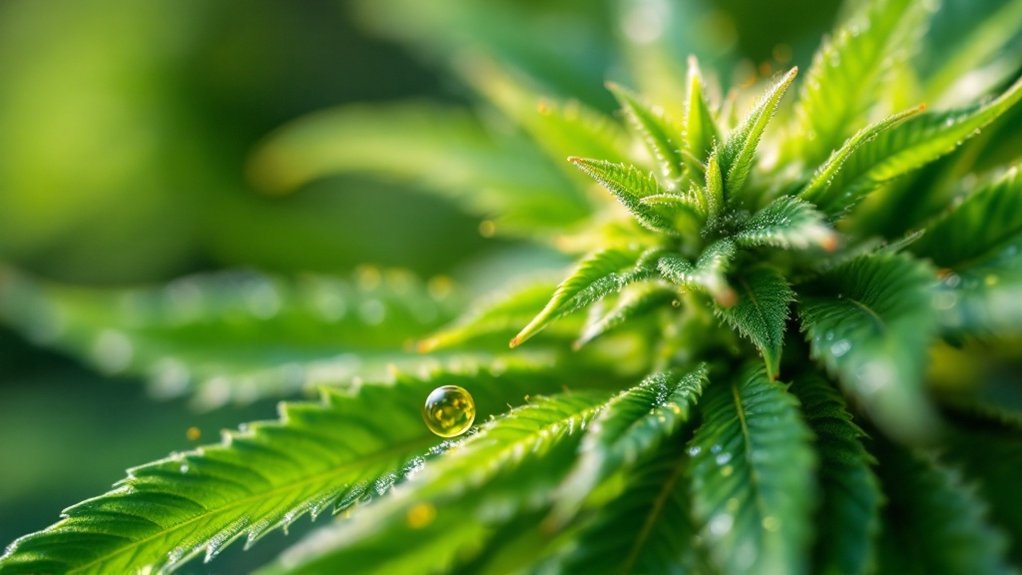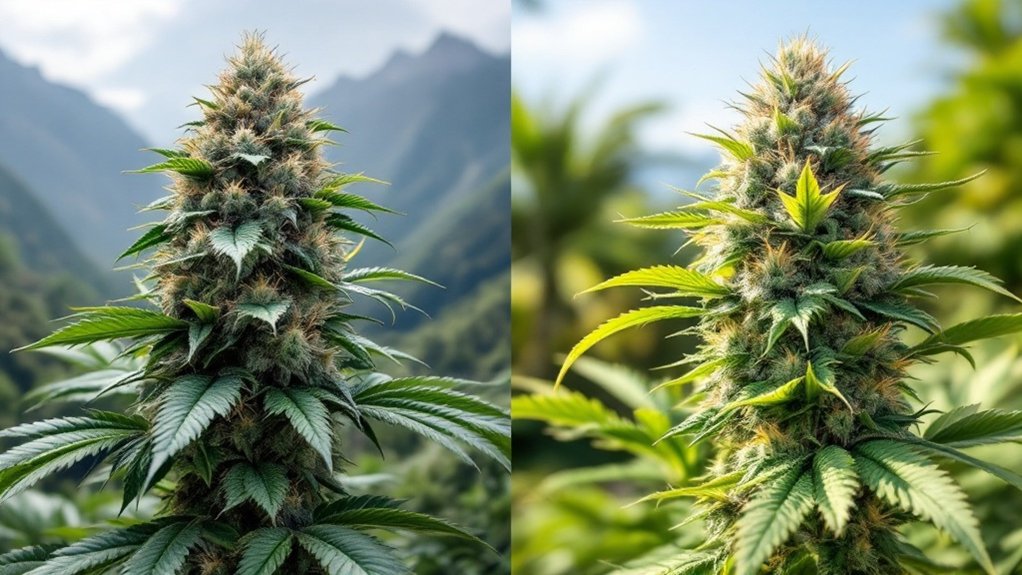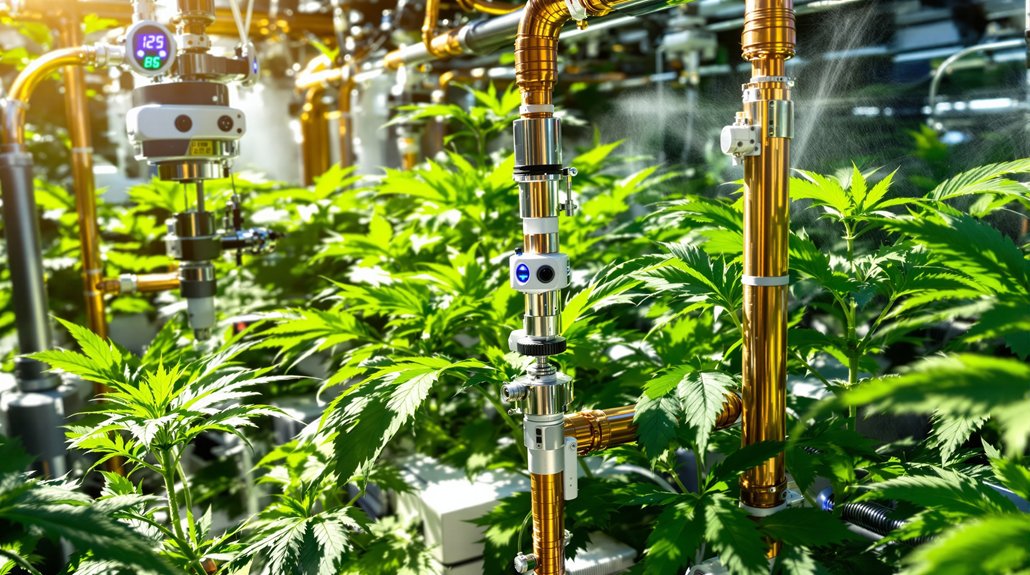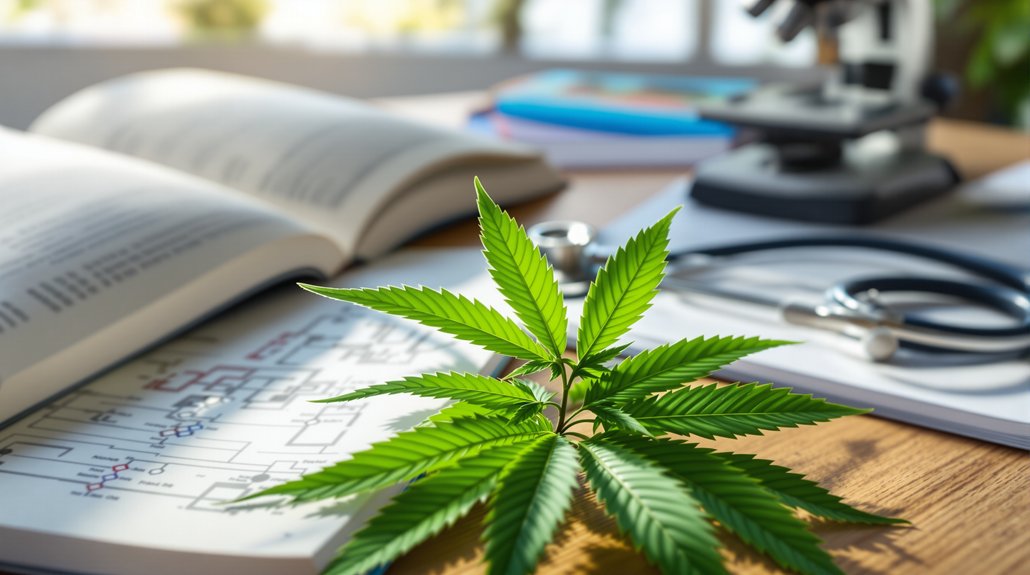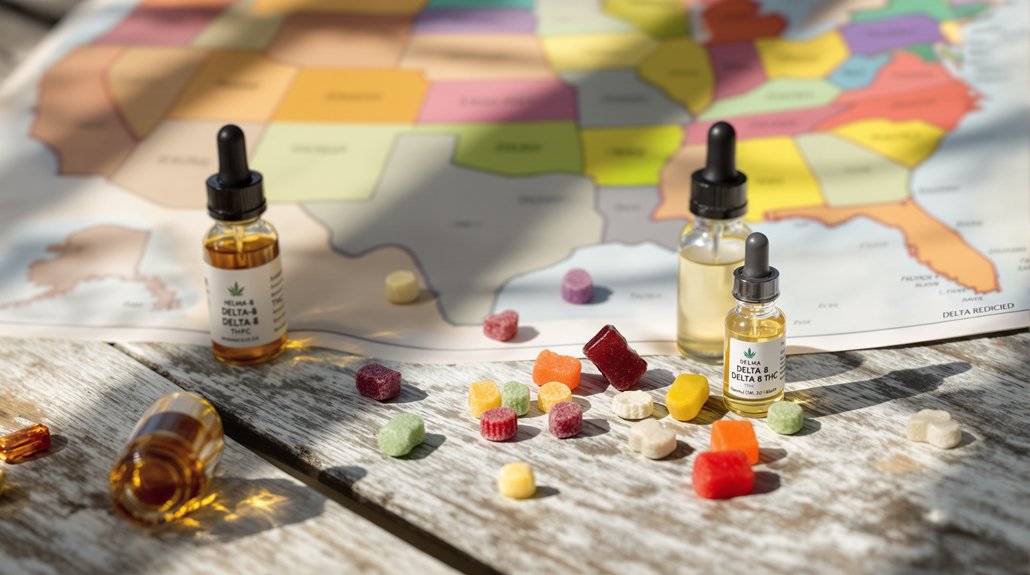CBG (cannabigerol) is the “mother of all cannabinoids,” serving as the precursor molecule from which other cannabis compounds develop. Initially present as cannabigerolic acid (CBGA), it typically constitutes less than 1% of cannabinoid content in mature plants as it transforms into THC, CBD, and other compounds. Unlike THC, CBG is non-psychoactive, producing no intoxication while demonstrating potential therapeutic properties through its interactions with cannabinoid receptors and other biological systems. Further exploration reveals CBG’s unique biochemical significance and commercial challenges.
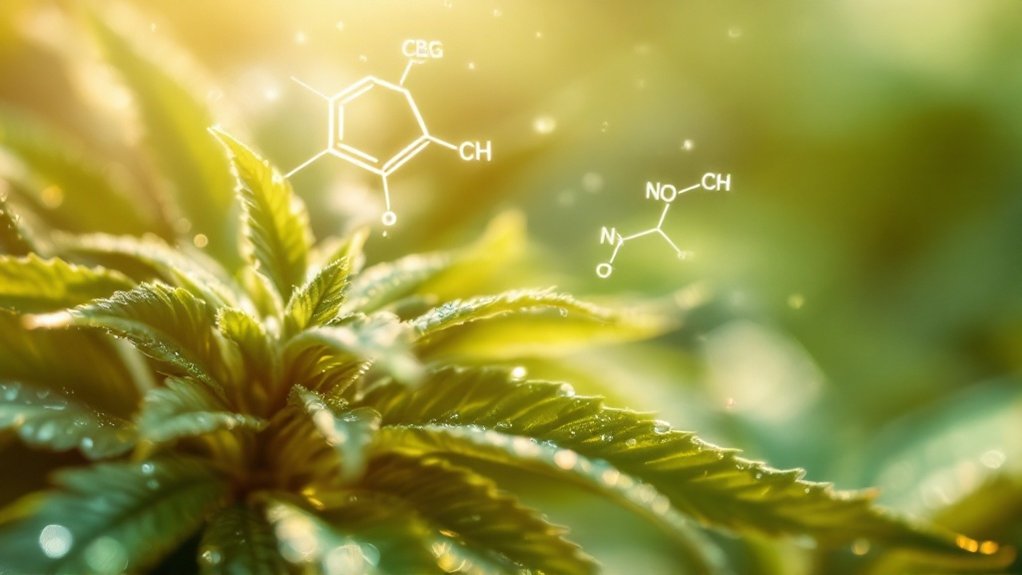
Cannabigerol, commonly abbreviated to CBG, represents one of the most fundamental yet least abundant compounds in cannabis chemistry. Often referred to as “the mother of all cannabinoids,” CBG plays an essential role as the precursor molecule from which other major cannabinoids develop. Despite its importance, CBG typically constitutes less than 1% of the cannabinoid content in mature cannabis plants, earning it classification as a minor cannabinoid. In its initial form, CBG exists as cannabigerolic acid (CBGA), which subsequently transforms into various cannabinoids as the plant matures.
The biochemical significance of CBG stems from its position at the beginning of cannabinoid biosynthesis. CBGA serves as the foundational compound that, through enzymatic processes, converts into tetrahydrocannabinolic acid (THCA), cannabidiolic acid (CBDA), and other cannabinoid acids. These compounds later decarboxylate into their active forms: THC, CBD, and others. This conversion process explains why mature cannabis plants contain such minimal CBG concentrations—most has already transformed into other compounds by harvest time. Specialized cultivars like White CBG and Super Glue have been developed specifically to produce higher concentrations of this valuable cannabinoid. The biosynthesis begins with the combination of hexanoyl-CoA and malonyl-CoA, which ultimately leads to the formation of cannabigerolic acid.
CBG stands as the molecular cornerstone from which all other cannabinoids develop—nature’s template for cannabis chemistry.
Unlike THC, CBG produces no psychoactive effects, meaning users experience no intoxication or “high” when consuming it. This non-psychoactive nature makes CBG potentially valuable for those seeking therapeutic benefits without cognitive impairment. The compound’s legal status also tends to be less restrictive than THC in many jurisdictions, potentially enabling broader applications and accessibility.
CBG’s pharmacological activity occurs through various receptor interactions in the human body. It demonstrates weak binding affinity for cannabinoid receptors CB1 and CB2, acting as a partial agonist or antagonist. More notably, CBG exhibits high potency as an α2-adrenergic receptor agonist and functions as a moderate antagonist at the serotonin 5-HT1A receptor. These non-cannabinoid receptor interactions likely account for most of CBG’s physiological effects.
The extraction and commercial production of CBG present challenges due to its naturally low abundance. Specialized breeding programs now focus on developing CBG-rich cannabis strains to overcome this limitation. Agricultural scientists have begun creating varieties that maintain higher CBG levels by manipulating the timing of harvest or genetically inhibiting the enzymatic conversion of CBGA to other cannabinoids.
As research continues to reveal potential applications, interest in CBG cultivation and extraction techniques continues to grow among researchers and producers alike.
Frequently Asked Questions
Is CBG Legal in All States?
CBG is not universally legal in all states, despite its federal legality under the 2018 Farm Bill when hemp-derived and containing less than 0.3% THC.
States maintain authority to establish stricter regulations or outright prohibitions on cannabinoids, including CBG. The legal landscape varies considerably across states, with some following federal guidelines while others impose additional restrictions.
Consumers should verify state-specific laws before purchasing or possessing CBG products, as regulations continue to evolve through ongoing legislative changes.
How Does CBG Make You Feel Compared to CBD?
CBG typically produces more stimulating and energizing effects similar to coffee, while CBD tends to be calming and relaxing.
Many users report that CBG provides mental clarity, focus, and daytime alertness without the sedation often associated with CBD.
Both cannabinoids are non-psychoactive, meaning neither produces a “high.”
CBG’s direct binding to CB1 and CB2 receptors in the endocannabinoid system may contribute to its more targeted, uplifting effects compared to CBD’s indirect modulation mechanism.
Can CBG Show up on a Drug Test?
Pure CBG isolate typically doesn’t trigger positive results on standard drug tests, as these screenings target THC metabolites specifically.
However, full-spectrum or broad-spectrum CBG products may contain trace amounts of THC that could accumulate in the body with regular use.
While CBG itself is chemically distinct from THC, product contamination presents the primary risk for test failure.
Specialized testing methods using mass spectrometry can detect CBG, but these are rarely employed in common employment or legal screening contexts.
What Are the Side Effects of CBG?
CBG’s side effects typically manifest as mild symptoms in a minority of users.
Common effects include dry mouth (16.5%), sleepiness (15%), increased appetite (12%), and dry eyes (9%), as reported in a 2024 clinical trial.
Some individuals experience dizziness, digestive upset, or headaches, particularly at higher doses.
Side effect incidence appears dose-dependent and varies markedly between individuals due to biological differences.
The majority of CBG users report no adverse effects, though research remains limited.
Can CBG Be Used With Prescription Medications?
CBG can interact with prescription medications through its inhibition of liver enzymes, particularly CYP2C9.
This interference may increase blood levels of medications metabolized by these pathways, potentially amplifying their effects or side effects.
Medications of concern include blood thinners, blood pressure medications, statins, anticonvulsants, and certain chemotherapy agents.
Patients should always consult healthcare providers before combining CBG with any prescription medications, as individual risk assessments are necessary due to varying patient responses.
